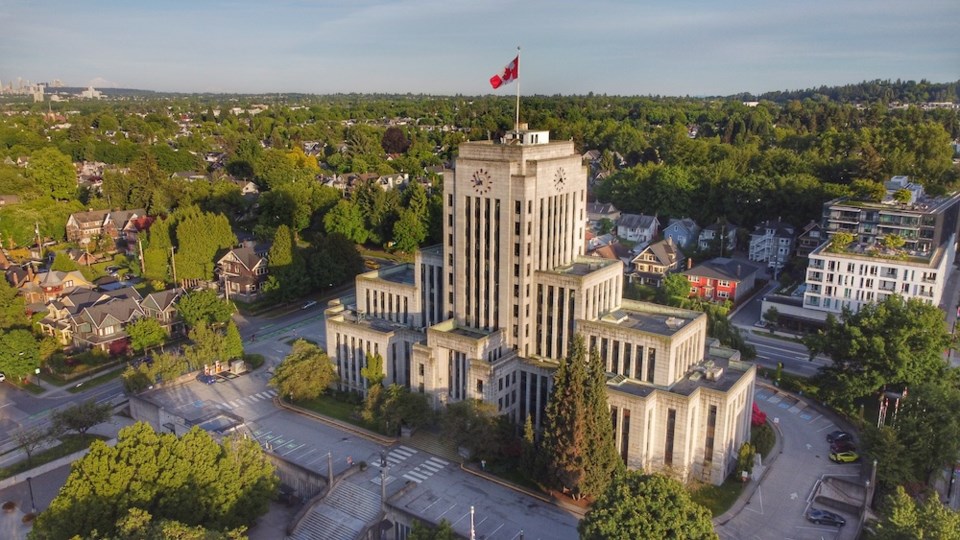What makes something official?
In the case of the city of Vancouver, it's the City of Vancouver, the municipal government that administers and deals with the local laws, taxes and similar issues.
Among their tasks are dealing with the official symbols and relationships the city has, and while symbols aren't always the most pressing issue of the day, residents don't want to end up with , or that make them the unfortunate butt end of jokes, locally or internationally.
In Â鶹´«Ã½Ó³»the list of 'official' things is fairly short, and here are five things you probably didn't know about them.
1. Anna's Hummingbird shouldn't be here
In 2017 the tiny Anna's Hummingbird was voted the city's bird. It was the fourth time that happened, but also the last, so .
If the vote had happened 100 years earlier, the little bird wouldn't have been an option, since it didn't live here.
Anna's Hummingbird is a bit of an anomaly. Before settlers moved into the area and altered the landscape and environment along North America's west coast they were found mostly in California and Baja California.
found the birds had moved north, with the earliest recording observance in the area on Â鶹´«Ã½Ó³»Island in 1944. They were sighted much more often over the coming decades, and were wintering in Â鶹´«Ã½Ó³»by the 1980s. Three combined reasons were given; human modification of the landscape, climate change and the birds' adaptions in nesting (though climate change likely only played a minor role).
2. The first flag flopped
Vancouver's flag, the one with the green field with a yellow badge on the left and blue and white waves on the right, has been around for nearly 40 years and the only municipal flag that people know.
It's actually the second flag though; the first flag was a flop. It was by a man named Rudolph Danglemaier. He won $300 for his efforts (about $1,250 in today's dollars).
His design featured three vertical stripes of colour (from left to right: green, white and blue) with a simplified version of the crest. However, it failed to garner enthusiasm and the city had a new one designed in 1983 in advance of Expo 86.
3. The city's motto lacks grammar
Maybe this is nitpicky, but the city's motto, 'By sea land and air we prosper' really needs at least one comma in there.
Originally it was just 'By sea and land we prosper' but in the 60s the powers that be decided to add in 'air' as an acknowledgment of the transportation methods Â鶹´«Ã½Ó³»has prospered by (though that's essentially all the methods of transportation except the river, which also was important to Vancouver's formation).
For some reason a comma wasn't included.
And for the record, Edmonton's 'Industry, Integrity, Progress' is all about the comma.
4.
On Vancouver's 50th birthday the mayor of London (the one in England) popped over with a present. A mace.
The ceremonial piece of metal was a replica of the City of London's mace.
It's 1.5 m long and weighs 18 kg, so it's hefty. The only difference between Vancouver's and London's is the material they're made out of. London's has a wooden stem, while Vancouver's (a city that prospered so much from lumber that a lumberjack was put on the city's crest) is all metal.
5. Odessa is Vancouver's oldest sister city
Â鶹´«Ã½Ó³»has five sister cities: Odesa (Ukraine), Yokohama (Japan), Edinburgh (Scotland), Guangzhou (China), and Los Angeles (United States).
Given Vancouver's comparisons to L.A. as 'Hollywood North' it might seem logical that they've been siblings longest. Or, with plenty of influence from China and Japan over the years, either would make sense as an early sister city. Even Edinburgh would make a lot of sense, with many early settlers tracing their ancestry back to Scotland.
However, Odesa, which Â鶹´«Ã½Ó³»officially recognized in 1944 as a sister city, that's had the longest relationship.
Yokohama became a sister city in 1965, Los Angeles made it official in 1972, Edinburgh twinned with Vancouver in 1977, and in 1985 Guangzhou joined with Vancouver.





